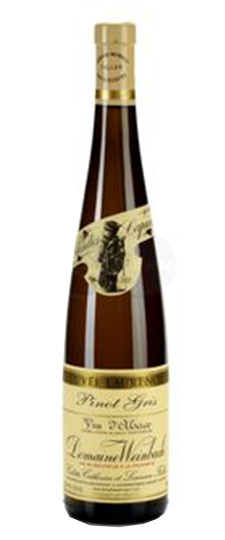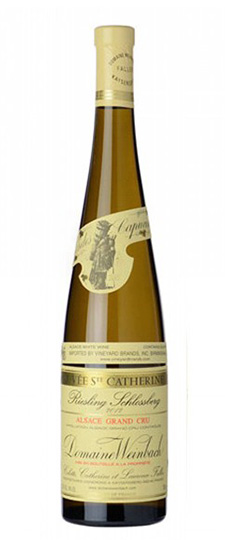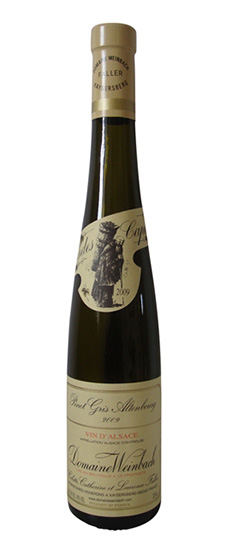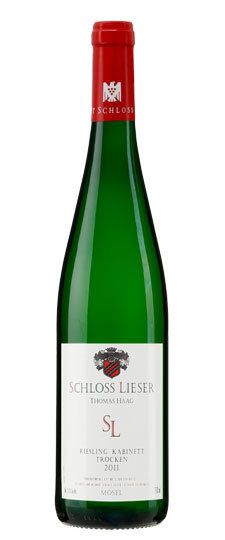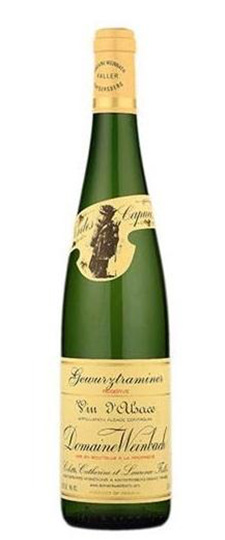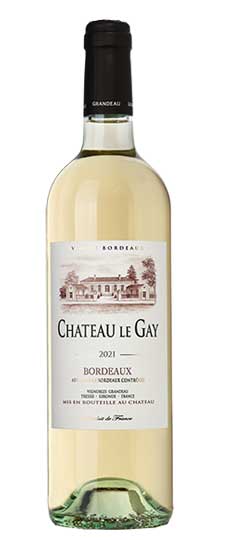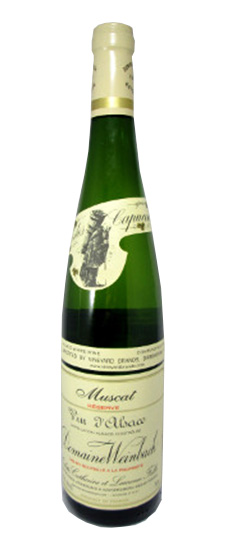Wine Score
VinousMedia.com 92 Wine Score
Bright straw-yellow. Ripe apricot, butter and spices on the nose, with hints of tropical fruits. A silky-sweet fruit bomb on the palate, with nicely concentrated if moderately nuanced apricot and orange flavors. This has the stuffing to support its 14.2% alcohol. In a distinctly sweeter style (36 g/l r.s.), carrying its fruit through an almost sugary aftertaste. 89 points
by Stephen Tanzer, November 2010
Wine Spectator 89 Wine Score
A silky, off-dry version, with lush flavors of peach, mandarin orange sorbet, almond, lemon curd and papaya. Offers juicy acidity, creating a mouthwatering impression, with an undercurrent of smoky mineral and spice. A candied note echoes on the clean, minerally finish. Drink now through 2025. 279 cases made.
by Alison Napjus, Oct 31, 2011
The Wine Advocate 89 Wine Score
The Fallers’ 2009 Pinot Gris Altenbourg (from lower-lying, non-grand cru parts of that site) introduces a sense of primary juiciness and buoyancy relative to its Saint Catherine counterpart, with only a bit over 14% alcohol and prominent residual sugar. Overripe peach, musk, black truffle, and orange are the prominent elements of this decadently rich, satisfyingly long Pinot Gris likely to be best drunk over the next 3-5 years. (No Cuvee Laurence was produced from this vintage.) Drink: 2011 – 2016
by David Schildknecht, eRobertParker.com #194, May 2011
Grape Variety
Pinot Gris Wine
Pinot Gris is a white-wine grape originally from the vineyards of Burgundy, but now found in wine regions all over the world. When produced in the pale, light style popularized in late 20th-Century Italy, the variety and its wines are typically referred to by the Italian name Pinot Grigio.
One of the more famous members of the extended Pinot family of grape varieties, Pinot Gris is a pink-skinned mutation of Pinot Noir. The two varieties are indistinguishable in the vineyard right up until veraison, when Pinot Gris berries take on their distinctive array of colors; anything from orange-pink to pale, dusty purple. The adjective gris is French for “gray”, and refers to the dusty, light-gray sheen the grapes often take on. Although possibly confusing to English speakers, this convention is widely used in Europe, notably in Italian (grigio), German (grauer), Slovenian (sivi) and Czech (sede).
Pinot Gris grapes
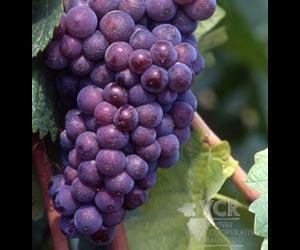 Although sometimes used as a blending component, Pinot Gris is most commonly produced as a varietal wine. Flavors and aromas vary greatly from region to region and from style to style, but commonly feature notes of pears, apples, stonefruit, sweet spices and even a hint of smoke or wet wool. Most winemakers avoid obvious oak character in their Pinot Gris, but some use older barrels (which leave less oak flavor in the wine) for fermentation. For weightier, more complex styles of Pinot Gris, lees contact and partial malolactic fermentation are commonly used. Sweet late-harvest versions wines are common.
Although sometimes used as a blending component, Pinot Gris is most commonly produced as a varietal wine. Flavors and aromas vary greatly from region to region and from style to style, but commonly feature notes of pears, apples, stonefruit, sweet spices and even a hint of smoke or wet wool. Most winemakers avoid obvious oak character in their Pinot Gris, but some use older barrels (which leave less oak flavor in the wine) for fermentation. For weightier, more complex styles of Pinot Gris, lees contact and partial malolactic fermentation are commonly used. Sweet late-harvest versions wines are common.
Pinot Gris grapes are naturally low in acidity and high in sugars, so the finest Pinot Gris wines come from the world’s cooler viticultural regions; those from warmer climates tend to lack acidity and structure and can be overbearingly alcoholic. Europe’s showcase examples come from vineyards on either side of the Rhine river, from Baden and Pfalz in Germany and, particularly, Alsace in France. In these regions, the wines are made in varying levels of sweetness, from bone dry to lusciously sweet; a Pinot Gris Selection de Grains Nobles from Alsace is one of the sweetest, most intensely flavored wines on earth.
In Alsace, Pinot Gris was known for many centuries as Tokay or Tokay d’Alsace. However, in 2007 the European Union outlawed use of that name in Alsace, in order to prevent confusion with Hungary’s prestigious Tokaji wines.
Of the New World wine regions, the variety is doing well in the United States (most notably Oregon but also Washington and California) and New Zealand. New World producers have recognized and respected the distinction between the Pinot Gris and Pinot Grigio styles, and typically label their wines accordingly (lighter, drier versions as Pinot Grigio, while sweeter or richer styles as Pinot Gris).
For more information on Pinot Gris’ lighter, crisper alter ego, see Pinot Grigio.
Synonyms include: Pinot Grigio, Rulander, Grauburgunder, Grauer Burgunder, Grauer Riesling, Grauklevner, Malvoisie, Fromenteau Gris, Pinot Beurot, Auvernat Gris, Auxerrois Gris, Tokay d’Alsace (prior to 2007), Szurkebarat, Sivi Pinot.
Food matches for Pinot Gris include:
- Insalata di bresaola (air-cured beef salad)
- Salt and pepper squid
- Pulled pork with fennel and apple slaw
Region
Alsace Wine
Alsace, in the far north-eastern corner of France, stands out from other French wine regions thanks to its strong Franco-Germanic influences. These are the result of the region having switched back and forth between German and French sovereignty in recent centuries – and are evident not only in Alsatian architecture and culture, but also in the wines.
The Alsace region lies between the Vosges mountains and the French border with Germany, marked by the Rhine river. A long, thin region, it measures 115 miles (185km) north to south and just 25 miles (40km) from east to west. The key viticultural areas here are all located on the lower hillsides of the Vosges, on slopes with east and south-easterly aspects.
Alsace
A February morning in Alsace
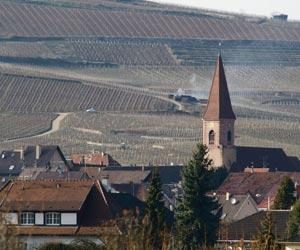 The Vosges play a vital role in defining the region’s terroir; they not only provide protection from the prevailing westerly winds, but also cast a rain shadow over the area, contributing to the low rainfall of its continental climate. They are at their most dense in the southern half of Alsace, where the peaks reach roughly 4600ft (1400m). The glacial activity which created the mountains has also significantly impacted the region’s topography and soils. These vary from sandstone, granite and volcanic rock types in the foothills, to clay-rich limestone and marlstone on the alluvial plains below.
The Vosges play a vital role in defining the region’s terroir; they not only provide protection from the prevailing westerly winds, but also cast a rain shadow over the area, contributing to the low rainfall of its continental climate. They are at their most dense in the southern half of Alsace, where the peaks reach roughly 4600ft (1400m). The glacial activity which created the mountains has also significantly impacted the region’s topography and soils. These vary from sandstone, granite and volcanic rock types in the foothills, to clay-rich limestone and marlstone on the alluvial plains below.
Alsace is the only French wine region to grow significant quantities of Riesling and Gewurztraminer. Both of these varieties are more commonly associated with German wines, and serve as a reminder of Alsace’s history. Pinot Gris, a variety typically marginalized in other French regions as a blending component, is another of the region’s specialties. Sylvaner and Muscat are also traditional Alsace grape varieties, as are Chasselas and Auxerrois although the latter two tend to be used not in single-variety wines but in blends (see Edelzwicker).
Alsace’s wines are produced under three key appellations: Alsace and Alsace Grand Cru for still white wines (both sweet and dry), and Cremant d’Alsace for sparkling. Almost all wine produced in this region fits into one of these three designations.
White varietal wines make up 90% of production here, from the varieties stated above. Key variations in wine styles are marked by their residual sugar levels, which cover the entire sweetness spectrum from bone dry to lusciously sweet. In 1983, the official terms Vendanges Tardives and Selection de Grains Nobles (see French Wine Label Information) were introduced to define and categorize sweet Alsace wines. They remained unique to the region for some time, but are now used in other French appellations such as Jurancon and Coteaux du Layon.
Although significantly outnumbered by white wines, red wines are also made here, mostly from Pinot Noir. Alsace Pinot Noirs are typically lighter-bodied and more rustic than those produced in the variety’s homeland Burgundy, 140 miles (225km) to the south-west. That said, climate change and warmer summers are leading the region’s winemakers to produce noticeably more powerful styles of Pinot Noir.
Dotted along the length of the region are 51 sites marked out as being of particular distinction; the Alsace Grand Cru vineyards.
Producer Notes
About Domaine Weinbach
Domaine Weinbach is a leading wine estate in the Alsace region. It is named after the “wine brook”, a small stream that runs through the main property, which is a former monastery near Kayserberg. The estate is known for its wines made at varying levels of sweetness from Riesling, Pinot Gris, Pinot Blanc, Sylvaner, Gewürztraminer and Muscat.
Domaine Weinbach
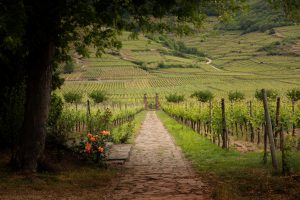 Unusually for the region, Weinbach only uses estate-grown grapes. It has holdings in four nearby Grand Cru vineyards on the slopes of the Weisbach Valley – Schlossberg, Furstentum, Mambourg and Marckgrain. Weinbach also owns the famous 5-hectare (12-acre) monopole, Le Clos des Capucins, which surrounds the cellars just below Schlossberg, and the Altenbourg vineyard adjacent to Furstentum.
Unusually for the region, Weinbach only uses estate-grown grapes. It has holdings in four nearby Grand Cru vineyards on the slopes of the Weisbach Valley – Schlossberg, Furstentum, Mambourg and Marckgrain. Weinbach also owns the famous 5-hectare (12-acre) monopole, Le Clos des Capucins, which surrounds the cellars just below Schlossberg, and the Altenbourg vineyard adjacent to Furstentum.
All of the estate’s 28ha (69 acres) of vineyards have been farmed biodynamically since 2005 and are certified by Ecocert and Demeter. After a gentle, gradual pressing, the juice is slowly fermented in old oak vats using indigenous yeasts.
For several decades the estate was run by Colette Faller and her daughters, winemaker Laurence and sales director Catherine. Laurence died tragically young from a heart attack in 2014, and her mother passed away the following year. Catherine Faller now runs the estate with her sons.

